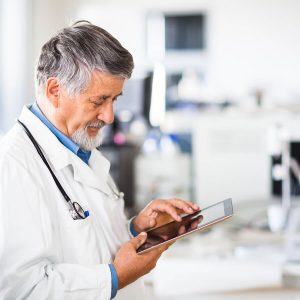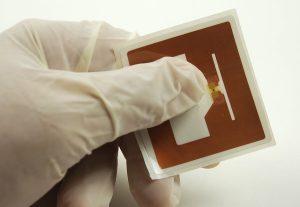Its no secret that Android is transforming everything from turning on the television to higher education. More and more, Android-powered devices are found on the roads, the schools, and even in your kitchen. But Android is doing more than just making daily life more convenient; in the medical industry embedded Android technology is helping save lives.
Sure, tablets have been around for a while, but they can be used for a lot more than taking notes. To meet confidentiality rights of patients and in compliance with Occupational Safety and Health Administration (OSHA), companies like Samsung are producing tablets with boosted locking capability and specifically built for hospital use. Many tablets are making their way into hospitalsreplacing the archaic paper system that causes lost records and requires valuable storage space. Look for tablets with the ability to pull up anyone’s medical records to replace the patented clipboard in the hands of doctors everywhere.


Radio-frequency identification (RFID) cards are becoming the foolproof way to securely and efficiently store patient data. No, doctors are not putting chips in your neck to track your geographic location (yet!), but they are placing these tags on samples that will be transported to another part of the hospital. Say you have a blood sample taken for evaluation, and it gets misplaced… This doesn’t happen often, but often enough to where RFID can eliminate the problem of mixing up patient evaluations. Scanning like a membership card, your sample is tagged and doctors can quickly bring up more than just your name in the lab or operating room.
University of Arlington in Texas is home to something called the Smart Hospital. In this amazing learning center, nursing students train in what looks like a real hospital…with real patients. But before you write the science fiction thriller, note that the patients are not real humans, they are a simulation. They are life-size, talking, breathing, pulse generating simulation humans (including children and infants). The technology allows professors to diagnose “simulation man” with a disease, or heart palpitations, or slowed breathing. Students react as they would in a real situation and “simulation man” is programmed to react realistically to that treatment. The stakes are as real as if the simulation was a human; students can save the patient’s life, but they can also cause him to flat-line. This learning environment simulates real world experiences using embedded systems.

There is talk by very powerful people (including Eric Schmidt, the former CEO of Google) about the medical industry undergoing massive change in this digital era. Picture a world where your smart-watch lets you know you might be in danger of having a seizure. We’re getting close! Though not on the market yet, this smart watch would send an alert when 50 data-points in body temperature, heart rate, eye movement, and dexterity align in the wrong way. A mobile device that can take low frequency x-rays that you can then forward to a radiologist for evaluation without having to wait in an emergency room? And sent along with your x-ray is a secured medical history file… again, we’re close.
In a world where we’re constantly questioning the use and abundance of technology, when it comes to the case of improving health and saving lives, we can safely say these innovations are a definitely good thing.